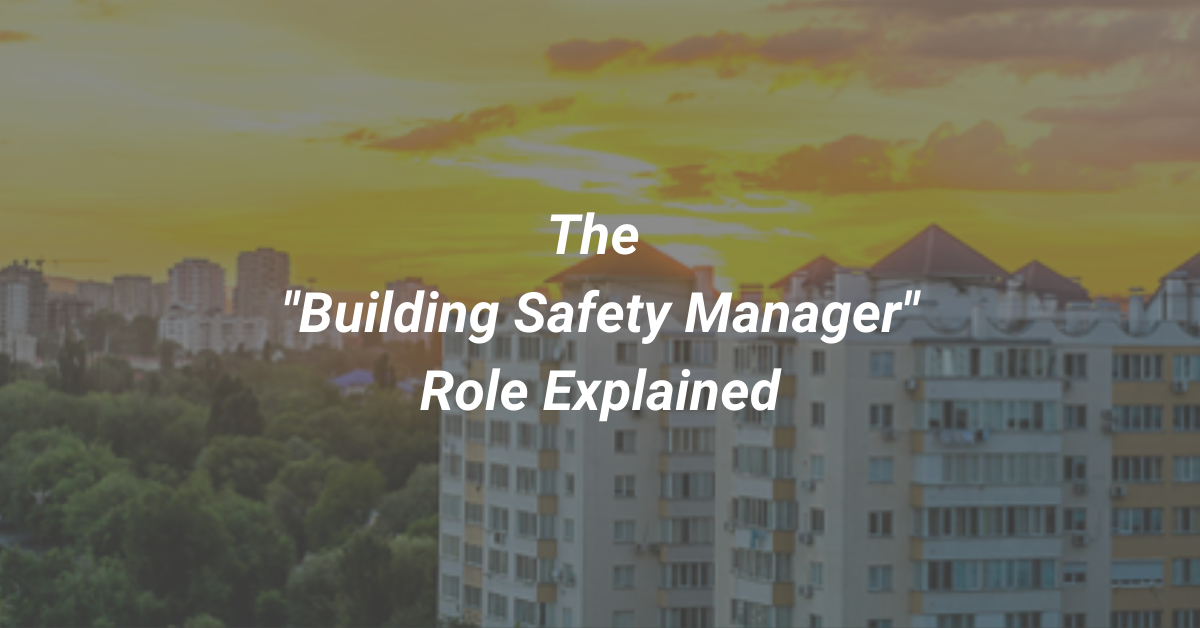The concept of a building safety manager has somewhat snowballed since Dame Judith Hackitt conducted a review into the Grenfell fire.
The role of a building safety manager would involve them monitoring the structural safety of high-risk buildings, while also establishing a point of contact for any residents in regards to fire or safety-related issues.Key Responsibilities Of A Building Safety Manager
The role of a safety manager is to support the AP, (Accountable Person). This is usually the property manager or owner. They would need to make sure that the building safety manager has the skills, knowledge and experience to maintain and manage the safety of the building.
They would also need to maintain the information management system, facilitating the safety of others. The role would also include making sure that any risks are identified proactively before mitigation measures, are not only put into place but also, maintained.

The Role of a Building Safety Manager
A building safety manager’s role is to support the accountable person, who has the responsibility of ensuring that all building safety standards are met.
The BSM (Building Safety Manager) will have the task of passing on details of any work that has been carried out, as well as ensuring that it meets the regulatory requirements.
The role of a BSM would be to coordinate the compliance program of the building while also ensuring that any alarms, fire equipment, appliance testing, and more are in accordance with the regulations. Fire management systems, including security arrangements and evacuation, must be implemented and coordinated.
Managers will also have the role of contributing to any internal procedures, ensuring that any health and safety regulations are adhered to where applicable.
How Would A Landlord Know If A Building Safety Manager Is Needed?
It will soon become a requirement for a BSM to be appointed for any building that is considered to be high risk.
This can include a building that has a multiple occupancy rate with a height over 18 metres.
It also includes any buildings that are seven or more storeys high. One of the complexities that unfortunately accompanies property management is the huge range of ownership models that are available.
Some can overlap, in single buildings. Mixed-use properties also have residential spaces above. It is anticipated that more regulations and clarification will be announced, as the deadline for the new law approaches.

Accountable Person VS Building Safety Manager- What’s the Difference?
The building safety manager will have the overall responsibility of handling certain tasks. These tasks will be set by the person who is accountable, according to the duties listed in the Building Safety Bill. The BSM is a supporting role, for the accountable person.
Royal Assent and the New Law for Building Safety Managers
The Building Safety Bill was presented in Parliament on the 5th of July, 2021. It is going to gain Royal Assent and is expected to become law by May 2023.
The Limit on How Many Buildings can be Managed by a BSM
The government have announced that they will not be setting a limit in regards to how many buildings can be managed by a building safety manager.
They have announced that it will be up to the sector to deem what is appropriate. The only regulation that is in place, is that there is a safe outcome for residents. Safety should not be compromised under any circumstances.
Managers should not be made responsible for too many buildings at once. There should be a named individual BSM, for a small number of buildings.
The Importance of Building Trust with Residents
A BSM needs to be someone who is in a strong leadership position. They need to be passionate about their role so that trust can be built with residents.
There has to be some degree of building knowledge, but this doesn’t have to be at a very high level. Communication in the role is far more important.
Residents need to understand where they are living, and they need to be updated with the various safety protocols that are in place so that they can feel safe and secure.




Leave Comment